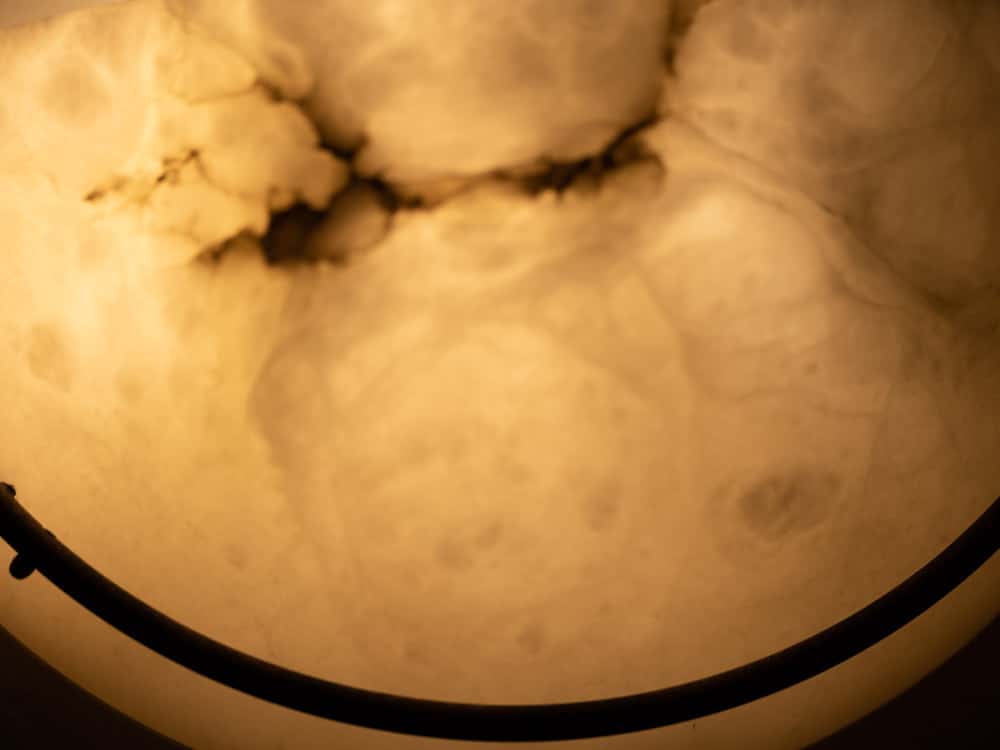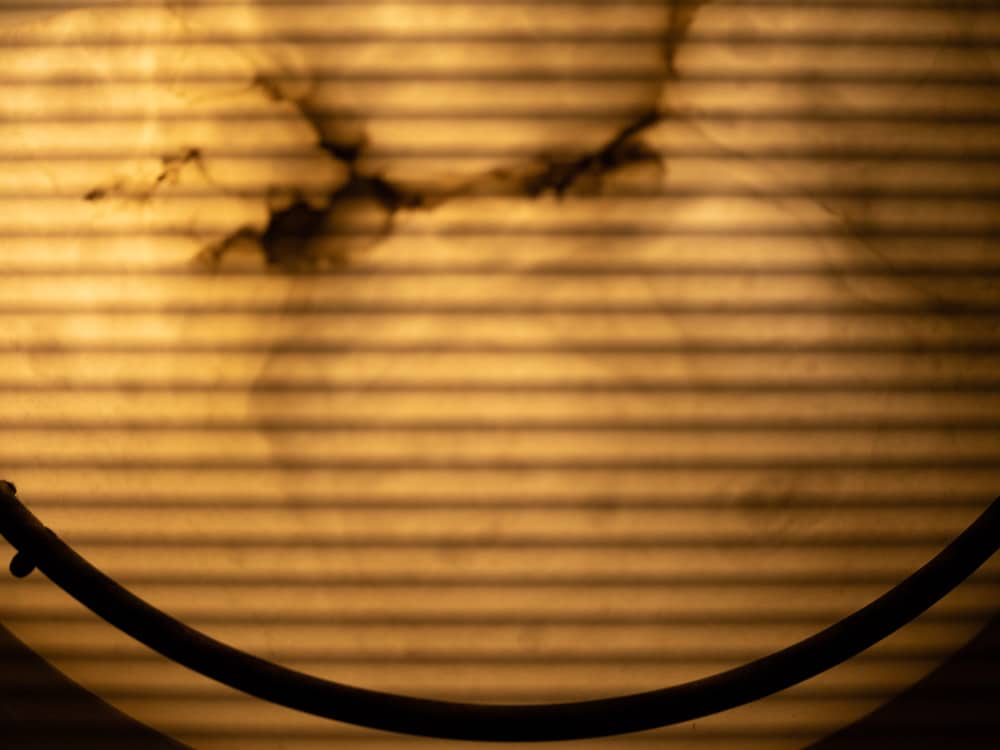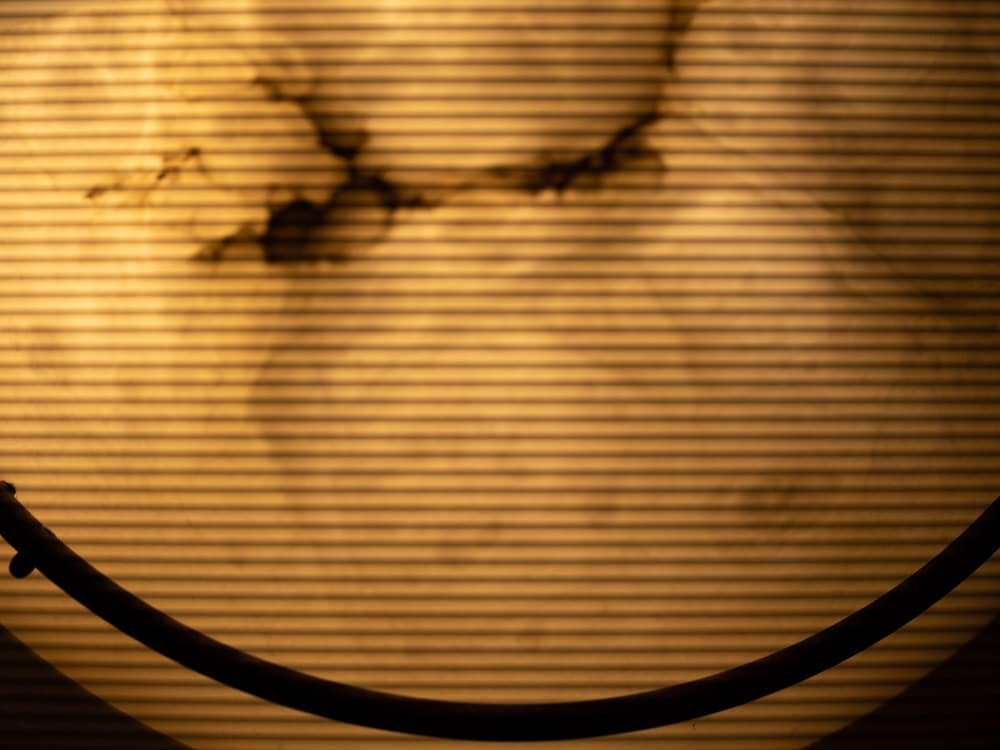This is one in a series of posts on the Fujifilm GFX 100. You should be able to find all the posts about that camera in the Category List on the right sidebar, below the Articles widget. There’s a drop-down menu there that you can use to get to all the posts in this series; just look for “GFX 100”.
In the past, I’ve measured the scan time of electronic shutters by photographing an analog oscilloscope trace of the output from a function generator. That was effective, but it took a while to set up and was a difficult experiment for some people to understand. So these days, I’ve been using a quick-and-dirty method: photographing light from an LED that’s modulated at 120 Hz. I used single shot losslessly compressed raw at about 1/4000 second shutter speed. The high shutter speed was chosen to force the bands to be better defined, and thus easier to count.
Here’s the image with 16-bit raw precision, and electronic first-curtain shutter (EFCS):

Now with the electronic shutter (ES) enabled, single shot mode, and 14-bit raw precision:

The LED cycles at 120 Hz, which means the spacing between the dark lines is 8.33 milliseconds (ms). There are 19.5 bands from top to bottom. That means it took the shutter 8.33*19.5 = 162 ms to make the trip. That’s about 1/6 of a second.
Now setting the raw precision to 16 bits:

Now there are 42 bands. 8.33*42 = 350 ms, or about 1/3 of a second.
You have been warned.
Robert Kosara says
Hi, I think you’re making an assumption here that the readout is entirely sequential. But what if, say, four reads are happening in parallel? This test can’t show you that, but the oscilloscope test (which I think is brilliant btw) will.
JimK says
I’ve never seen an ES readout that wasn’t sequential by row.
Rico Pfirstinger says
I assume he refers to this: https://blog.kasson.com/the-last-word/sony-a9-electronic-shutter-operation-single-shot/
JimK says
Yeah, on a micro level it’s not, but on a macro level it is. The LED light test gives the same scan time for the a9 as the ‘scope test.